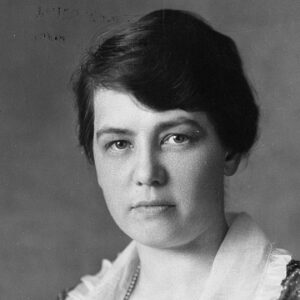The first woman to join the American Railway Engineering Association was Olive Dennis. She was one of the first women to earn a Civil Engineering degree from Cornell University, but she struggled to find meaningful work after graduation due to her gender. She worked hard and eventually got a job with the Baltimore and Ohio Railroad (B & O). Because half of the passengers on the railroad were women, it was thought that a woman would be better equipped to manage service engineering upgrades. As a result, Olive Dennis was appointed as the railroad’s first “service engineer” and given the task of improving passenger service. Over the course of her three-decade career, she worked tirelessly to make travel as comfortable as possible for passengers. She implemented various new innovations, including the railroad’s iconic blue and white Colonial dining car china, as a creative individual with an imaginative bent of mind. She was also instrumental in making the seats more appealing and comfy for passengers. She also advised that stewardesses, nurses, and other assistants be stationed on board to give services as needed. She worked as a consultant for the federal Office of Defense Transportation during WWII.
Childhood and Adolescence
Wetzel, Olive Dennis was born in Thurlow, Pennsylvania, on November 20, 1885, and moved to Baltimore as a child. She was always interested in engineering, even as a child.
Her parents gave her dolls to play with when she was a child. Instead of stitching clothes for the dolls, she used her engineering skills to build houses and design furnishings for them, as one would expect from a young girl. She also made toys for her brother, such as a model streetcar with changeable seats and trolley poles.
She attended Goucher College after graduating from Western High School and earning a bachelor’s degree in 1908. She subsequently moved on to Columbia University to get her master’s degree in mathematics and astronomy.
Career of Olive Dennis
Olive Dennis began her teaching career after finishing her master’s degree and spent ten years teaching mathematics at a Washington vocational school. She continued to pursue her passion for civil engineering while working as a teacher, attending two summer sessions of engineering school at the University of Wisconsin. She then spent a year at Cornell University, becoming only the second woman to get a Civil Engineering degree from the university in 1920.
Initially, she had difficulty getting work since firms were hesitant to hire a woman engineer. Undaunted, the determined woman went to the President of the Baltimore and Ohio (B & O) Railroad, Daniel Willard, and requested for a position.
In September 1920, she was hired as a draftsman in the engineering department of the B & O Railroad. Her first assignment was to design bridges. The railroad’s president remarked the next year that, because half of the railway’s passengers were women, appointing a woman to improve passenger service would be a realistic step.
In 1921, Olive Dennis received a promotion to the newly created position of “service engineer.” During her early years, she spent a lot of time on trains, experiencing and witnessing the common challenges that passengers confront.
One of the first things she changed was the schedule, which she thought was overly convoluted. She made it easy for the passengers to consult it by simplifying it.
During her hectic travel schedule, she would frequently stay up all night in day buses to try out new chairs or mattresses. She thought the seats were unpleasant and offered a number of suggestions to make them more comfortable for the passengers.
She spent three decades working for the railroad, during which time she designed and patented the Dennis ventilator, which allowed fresh air to enter without producing a draft. She also advocated for air conditioning in the coaches, dimmer overhead lights, and stain-resistant upholstery, among other developments that helped to attract more people to travel by train.
She worked as a consultant for the federal Office of Defense Transportation during WWII. She left the company in 1951.
Major Projects of Olive Dennis
Olive Dennis was a railroad pioneering genius and one of the most amazing female engineers of her time. She was the inventor of the Dennis ventilator, which was in the windows of passenger cars and could be adjusted by passengers, and she made rail travel more comfortable for passengers throughout the course of her three-decade career.
Achievements & Awards
She was the first woman to be admitted to the American Railway Engineering Association. She was one of the few women of her era to pursue an engineering career.
Olive Dennis was designated one of the nation’s top 100 career women in 1940.
Personal History and Legacy
Olive Dennis died in Baltimore, Maryland, on November 5, 1957, at the age of 71.
Estimated Net worth
The estimated net worth of Olive Dennis is unknown.


